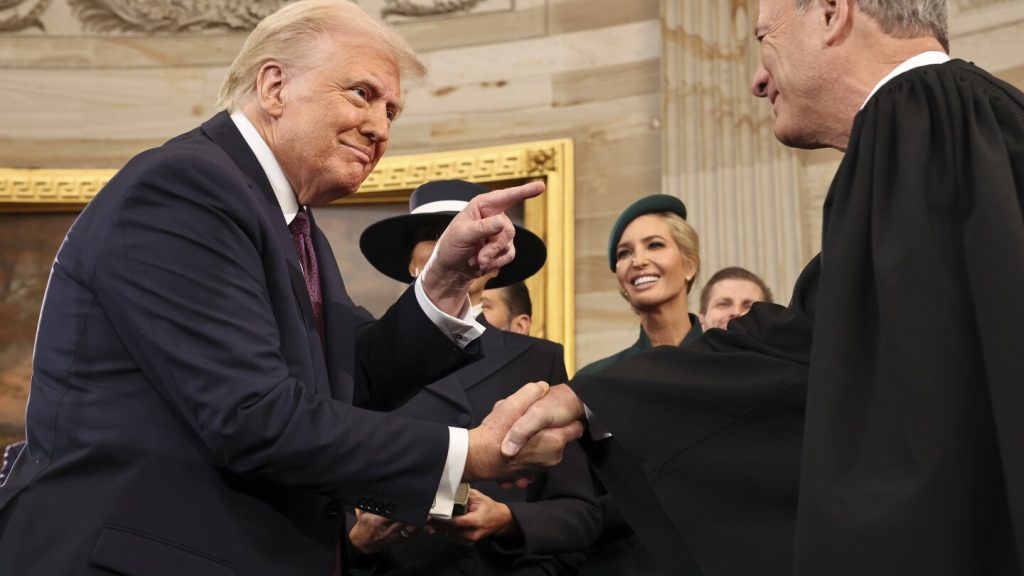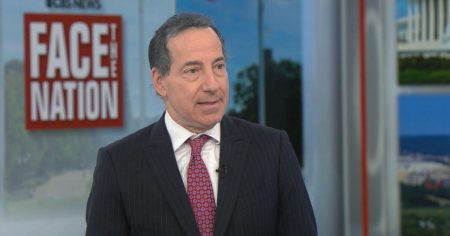The Supreme Court’s Role in Shaping Trump’s Second Term Agenda
President Donald Trump’s second term in office has been marked by a series of ambitious and controversial actions, many of which are likely to land before the U.S. Supreme Court. With three justices appointed by Trump himself—Neil Gorsuch, Brett Kavanaugh, and Amy Coney Barrett—the Supreme Court now leans heavily conservative. However, even with this conservative majority, some of Trump’s most aggressive proposals may face significant pushback. The court has already shown a willingness to uphold certain Trump policies, such as his travel ban targeting predominantly Muslim countries, but it has also pushed back on others, including his attempts to end the Deferred Action for Childhood Arrivals (DACA) program and include a citizenship question on the 2020 census. As Trump continues to test the boundaries of presidential power, the Roberts Court faces a critical test of its commitment to constitutional principles.
Birthright Citizenship: An Early and Critical Test
One of the most contentious issues likely to reach the Supreme Court is Trump’s executive order ending birthright citizenship for children of undocumented immigrants. This policy has already been blocked by a lower court, but the administration has signaled its intention to appeal. The case could reach the Supreme Court within weeks if the Justice Department seeks emergency review. Legal scholars across the ideological spectrum view Trump’s attempt to unilaterally revoke birthright citizenship as unconstitutional, as it directly contradicts the plain text of the 14th Amendment. While some conservative legal thinkers have expressed support for Trump’s position, the broader consensus is that the court is unlikely to uphold such a sweeping change to a longstanding constitutional principle. As Jonathan Adler, a right-of-center law professor, noted, “I’m exceedingly skeptical about there being any votes for the birthright citizenship executive order as written.”
Freezing Federal Spending and the Limits of Executive Power
Another major issue that could find its way to the Supreme Court is Trump’s effort to freeze federal spending and shut down USAID, the U.S. Agency for International Development. Lower courts have already paused these orders, and legal experts predict that the Supreme Court may also be skeptical of such broad assertions of executive authority. While the court has shown deference to the president on certain matters, particularly those involving national security, it has historically been wary of unchecked presidential power. For instance, the court ultimately upheld a revised version of Trump’s travel ban, but only after the administration narrowed its scope. Similarly, Trump’s efforts to redirect Pentagon funds to build a border wall were initially blocked by lower courts, though the Supreme Court allowed the funds to be used while litigation continued. As one legal expert noted, the court may be more open to modest reductions in spending or agency authority but is likely to resist more draconian measures.
Trump’s Power to Fire: A Question of Constitutional Authority
Trump’s efforts to fire officials at independent federal agencies have also sparked legal challenges and could potentially reach the Supreme Court. The president has already faced pushback for firing members of the National Labor Relations Board and the Equal Employment Opportunity Commission, all of whom are Democrats. One of the fired officials, Gynne A. Wilcox, has sued, arguing that federal law protects her from arbitrary dismissal. Her case could set the stage for a Supreme Court challenge to a 90-year-old precedent known as Humphrey’s Executor, which limits the president’s ability to fire members of independent agencies. While the court has already begun to chip away at this precedent, conservative justices such as Clarence Thomas and Neil Gorsuch have signaled a willingness to go further and overturn it entirely. If the court were to do so, it would mark a significant shift in the balance of power between the executive and independent agencies, with far-reaching implications for government accountability and independence.
Lessons from Trump’s First Term: A Mixed Record at the Court
Trump’s first term was marked by both significant victories and notable defeats at the Supreme Court. On the one hand, the court upheld his travel ban, allowed the administration to use Pentagon funds for a border wall, and supported his firing of the head of the Consumer Financial Protection Bureau. On the other hand, the court blocked Trump from ending DACA, including a citizenship question on the 2020 census, and rebuked him for attacking the judiciary. Chief Justice John Roberts played a pivotal role in many of these decisions, often joining with the court’s liberal justices to block Trump’s most sweeping assertions of power. However, the dynamics of the court have shifted significantly since Trump’s first term, with the addition of Justice Amy Coney Barrett following the death of Ruth Bader Ginsburg. This has left the court with only three liberal justices, potentially altering the balance of power in Trump’s favor.
The Broader Implications: A Court at a Crossroads
As Trump’s second term gets underway, the Supreme Court finds itself at a crossroads. The court has long emphasized its commitment to constitutional principles and the rule of law, but Trump’s aggressive assertions of executive power are pushing these principles to the limit. While the court has shown a willingness to uphold certain Trump policies, particularly those that align with its conservative majority’s views, it has also demonstrated an independence that may serve as a check on the president’s more extreme ambitions. As Michael Waldman, president of the Brennan Center for Justice, noted, “Some of the things we have seen are so blatantly unconstitutional that I am confident the court will stand up. Other things that align with the accumulation of the power of the presidency make me very nervous.” The coming years will reveal whether the Roberts Court is willing to stand up for constitutional principles in the face of unprecedented challenges, or whether it will succumb to the temptation to expand presidential power.












